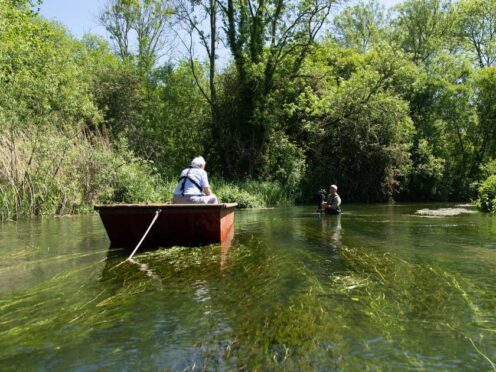A giant leech lurking in the woodland undergrowth has been captured hunting baby toads and swallowing them whole in the latest footage set to feature in Sir David Attenborough’s Wild Isles series.
In the BBC One programme, the 96-year-old naturalist and broadcaster shines a light on the challenges affecting the British Isles and celebrates nature that exists on our doorsteps.
The penultimate episode of the series will take look a closer look at freshwater habitats and their inhabitants, which Sir David describes as the “lifeblood of our wild isles”.

The programme documents female toads migrating to freshwater to lay their eggs and a few months later the tiny toadlets have to make their way to their woodland home where they will spend most of their adult lives.
However, the baby toads have to cross a “killing zone” haunted by carnivorous giant leeches which can grow up to 15cm long and hunt using a “keen sense of smell and five pairs of eyes”.
The episode shows the leeches grabbing the toadlets with either end of their body and consuming it whole, using their “three sets of teeth”.
Elsewhere in the episode, Sir David looks at the migration of Atlantic salmon, with footage of the fish battling upstream, leaping and attempting to ascend a three-metre waterfall.
The crew attached cameras to underwater drones in order to capture the footage, which took 71 days to film, the longest of any sequence on the series – including nine days to film the salmon leaping up waterfalls, the BBC said.

Episode four producer Chris Howard said: “Salmon are like the canaries of the coalmine – they touch every part of the river because they’re migratory – they are severely affected by climate change and pollution, as well as changes to the course of the river.
“They used to be in all our rivers, but their numbers have been in freefall across the British isles.”
Mark Bilsby, of the Atlantic Salmon Trust, said: “At the current rate of decline our salmon could be extinct in 20 years, and climate change is the biggest driver of that decline.”
Other significant moments from the episode include the first ever bat lek filmed using high-speed infra-red cameras in the North Yorkshire Moors and the remarkable behaviour of the mayfly with a sole purpose to breed.
It will also feature beaver territories in Scotland, a raft spider waiting for prey to make vibrations on the water’s surface and a flock of knot waiting to feed on the rich mudflats.

Producer Mr Howard added: “As for the knot – the spectacle of a hundred thousand waders taking to the air to avoid a stooping peregrine just as the sun sets is hard to beat.
“It also shows the importance of our estuaries – vital fuelling stations for migratory birds each winter – and is extra special because it only really happens three or four times a year when the tides, light and weather all come together. Spectacular.”
The final episode, titled Ocean, airing on Sunday April 9 will see Sir David sign off from Skomer Island.
Across the five episodes, the Wild Isles crew filmed in 145 locations and captured 96 species which took 1,631 days to film.
The series has been funded by nature charities WWF and the RSPB with support from the Open University, and has been produced by Silverback Films – the team behind many of the BBC’s landmark nature shows.
Episode Four: Freshwater will air on BBC One and iPlayer on Sunday April 2 at 7pm.
